Program Components

These are the critical years for laying the underpinnings for a lifetime of writing. Proceed with a little bit of caution and a lot of enthusiasm!
Kindergarten is its own unique level. So many foundations are being taught and Traits Writing™ program includes materials that address the specific needs of Kindergarteners.
Grades 1–2 Students "graduate" to different Student Handbooks and new lesson plans just right for them.

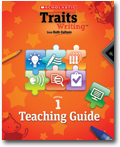 |
Teaching GuideContains focus lessons, mentor text lessons, warm-up activities, differentiated small-group activities, tips for managing independent writing, and much more. |
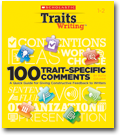 |
Comments BookContains 100 ”just-right” comments, correlated to the trait scoring guides. Write the comments on papers or use them in one-on-one conferences, small groups, and whole class lessons to inspire your students! [ See a Sample ] |
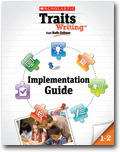 |
Implementation GuideExplains the instructional model, the research behind it, and ideas for scheduling instruction and managing the classroom. It provides detailed guidelines for assessing writing using the trait scoring guides, converting scores to grades, keeping records, and reporting progress to parents. [ See a Sample ] |
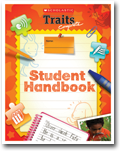 |
Student HandbookIncludes definitions of the traits and key qualities, worksheets, write-on pages, warm-up activities, “Think Abouts,” author previews, graphic organizers, tip sheets, publishing checklists, and other tools that support instruction in the Teaching Guide. [ See a Sample ] |
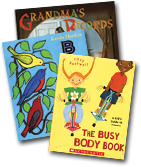 |
Mentor TextsA collection of fiction and nonfiction books and “everyday texts” serve as models for teaching the key qualities of the traits. Books and Everyday Texts align to a lesson in the Teaching Guide and most are accompanied by a video of the writer who created it. |
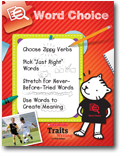 |
Trait PostersCool and colorful posters, one for each trait, that remind students of key qualities to think about as they draft, revise, and edit their work. Each one showcases a "Trait Mate" from the Student Handbook. |
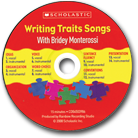 |
Sing-Along CDIncludes a wide variety of sing-along songs that help your youngest learners become familiar with each of the Traits and include both sing along and instrumental versions. Listen to a sample of the Sentence Fluency Sing Along |
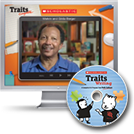 |
Traitspace™Every program comes with access to Traitspace, a password protected, easy-to-navigate website that includes:
|


Implementation is based on a 40-minute instruction block that includes whole class activities, peer reviewing, one-on-one conferencing, and differentiated small group instruction every week.

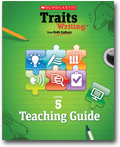 |
Teaching GuideContains focus lessons, mentor text lessons, warm-up activities, differentiated small-group activities, tips for managing independent writing, and much more. |
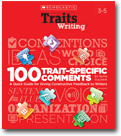 |
Comments BookContains 100 ”just-right” comments, correlated to the trait scoring guides. Write the comments on papers or use them in one-on-one conferences, small groups, and whole class lessons to inspire your students! [ See a Sample ] |
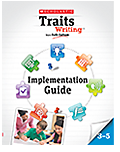 |
Implementation GuideExplains the instructional model, the research behind it, and ideas for scheduling instruction and managing the classroom. It provides detailed guidelines for assessing writing using the trait scoring guides, converting scores to grades, keeping records, and reporting progress to parents. [ See a Sample ] |
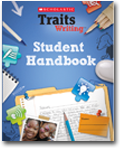 |
Student Handbook25 copies of the Student Handbook include definitions of the traits and key qualities, worksheets, write-on pages, warm-up activities, "Think Abouts," author previews, graphic organizers, tip sheets, publishing checklists, and other tools that support instruction in the Teaching Guide. [ See a Sample ] |
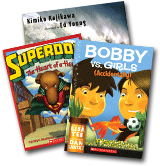 |
Mentor TextsA collection of 26 fiction and nonfiction books and “everyday texts” serve as models for teaching the key qualities of the traits. Books and Everyday Texts align to a lesson in the Teaching Guide and most are accompanied by a video of the writer who created it. |
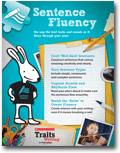 |
Trait PostersCool and colorful posters, one for each trait, that remind students of key qualities to think about as they draft, revise, and edit their work. Each one showcases a "Trait Mate" from the Student Handbook. |
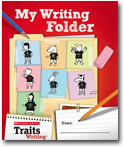 |
Writing FoldersProvide a place for students to stash works in progress. Pockets inside prevent papers from sliding out and the Editing Marks chart on the back provides a handy reference. |
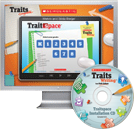 |
Traitspace™Every program comes with access to Traitspace, a password protected, easy-to-navigate website that includes:
|
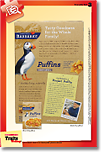 |
Everyday Text PostersEveryday Text Posters are examples of real-world text that students encounter in their everyday lives and are included in the lesson plans. [ See a Sample ] |


Implementation is based on a 40-minute instruction block that includes whole class activities, peer reviewing, one-on-one conferencing, and differentiated small group instruction every week.

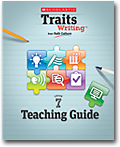 |
Teaching GuideContains focus lessons, mentor text lessons, warm-up activities, differentiated small-group activities, tips for managing independent writing, and much more. |
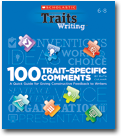 |
Comments BookContains 100 ”just-right” comments, correlated to the trait scoring guides. Write the comments on papers or use them in one-on-one conferences, small groups, and whole class lessons to inspire your students! [ See a Sample ] |
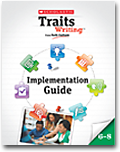 |
Implementation GuideExplains the instructional model, the research behind it, and ideas for scheduling instruction and managing the classroom. It provides detailed guidelines for assessing writing using the trait scoring guides, converting scores to grades, keeping records, and reporting progress to parents. [ See a Sample ] |
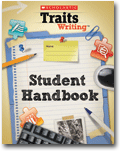 |
Student Handbook25 copies of the Student Handbook include definitions of the traits and key qualities, worksheets, write-on pages, warm-up activities, "Think Abouts," author previews, graphic organizers, tip sheets, publishing checklists, and other tools that support instruction in the Teaching Guide. [ See a Sample ] |
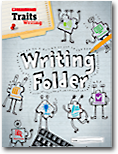 |
Writing FoldersProvide a place for students to stash works in progress. Pockets inside prevent papers from sliding out and the Editing Marks chart on the back provides a handy reference. |
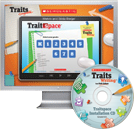 |
Traitspace™Every program comes with access to Traitspace, a password protected, easy-to-navigate website that includes:
|
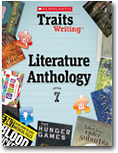 |
Mentor Texts26 Mentor Texts in a Literature Anthology (excerpts from high-quality fiction and nonfiction) or on Everyday Text posters (functional texts such as speeches, reviews, cartoons, signs, brochures, ad campaigns, and songs) serve as models for teaching the key qualities of Ideas, Organization, Voice, Word Choice, and Sentence Fluency. Each text is keyed directly to a lesson in the Teaching Guide and is accompanied by a voice of the writer who created it or of a writer who creates texts similar to it. [ See a Sample ] |
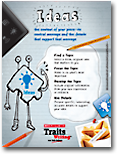 |
Trait PostersCool and colorful posters, one for each trait, that remind students of key qualities to think about as they draft, revise, and edit their work. Each one showcases a "Trait Mate" from the Student Handbook. |
 |
Everyday Text PostersEveryday Text Posters are examples of real-world text that students encounter in their everyday lives and are included in the lesson plans. [ See a Sample ] |






